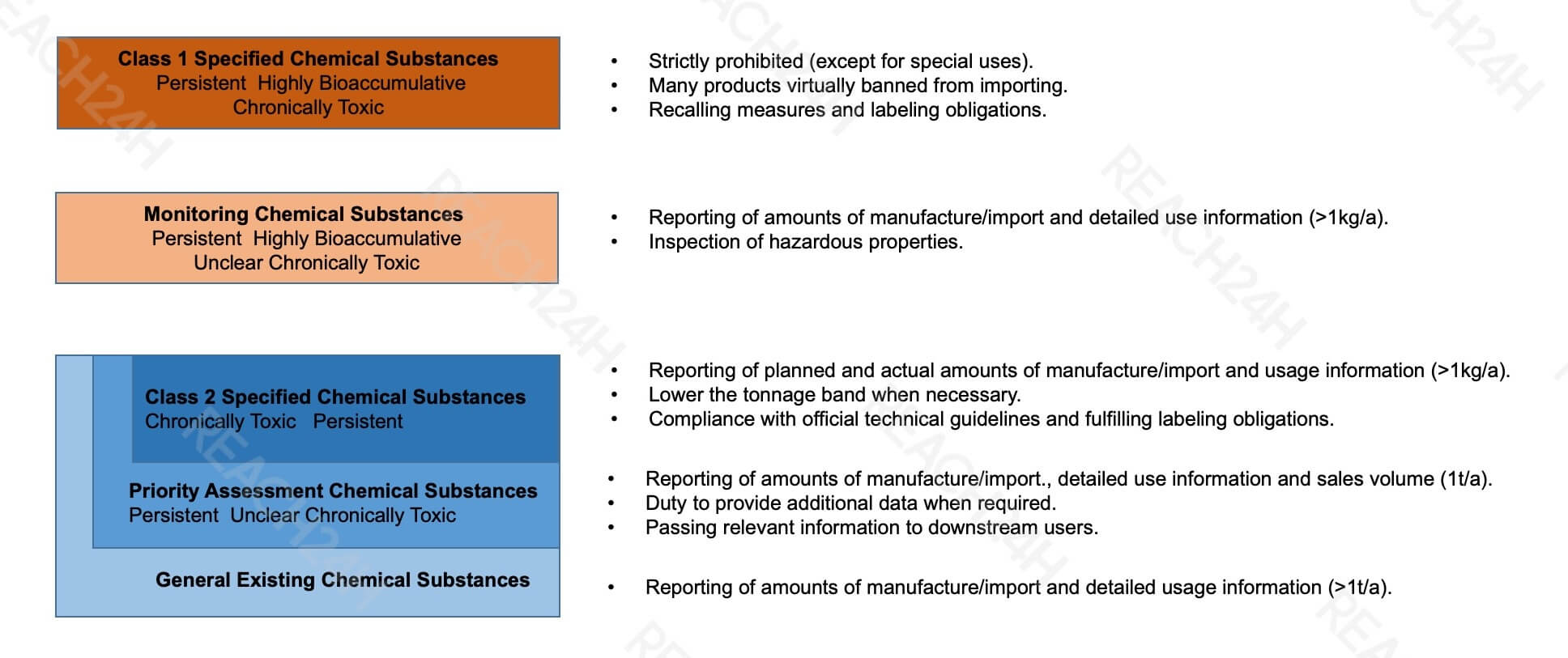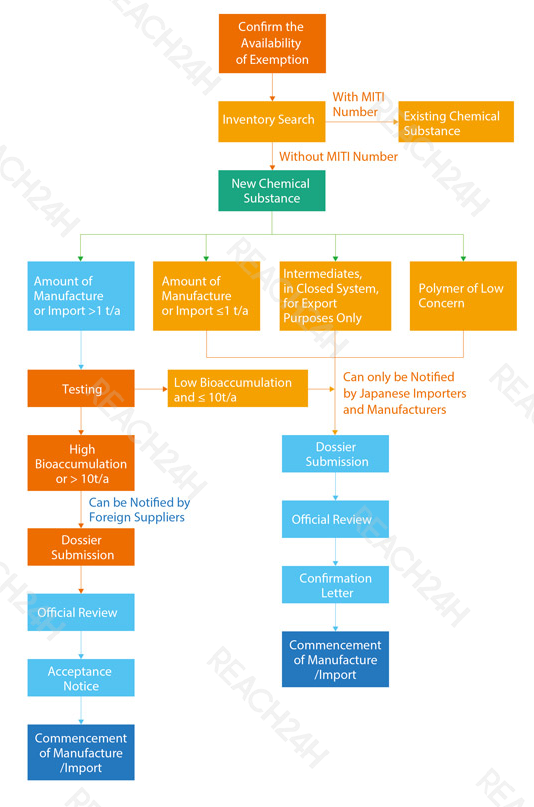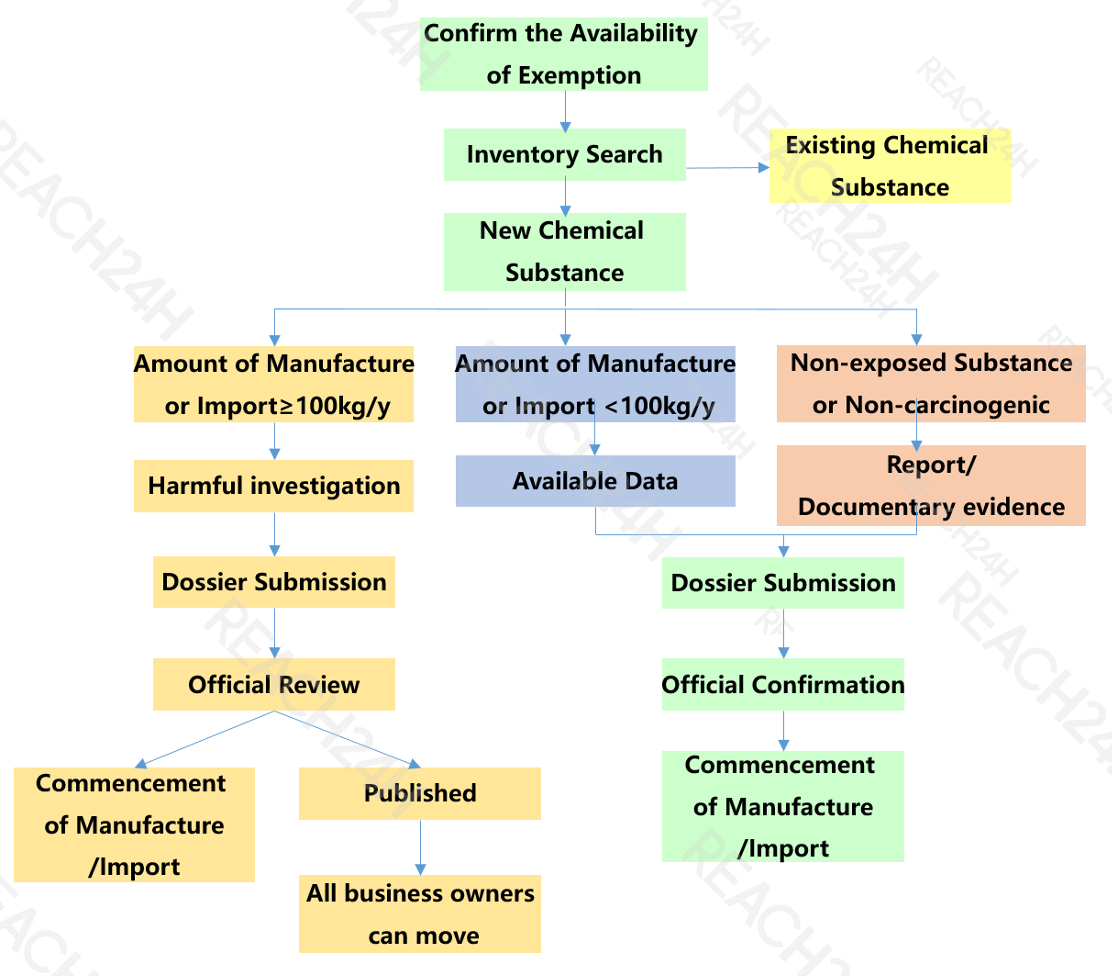Japan Chemical Substances Control Law (CSCL) & Industrial Safety and Health Law (ISHL)
[Japan Chemical Substances Control Law (CSCL)]
Overview
The Japan Chemical Substances Control Law (CSCL) was first enacted on 16 October 1973 to prevent environmental pollution and control chemical risks to human health. The Law is intended to manage the risks of industrial chemicals manufactured and imported in Japan. The 4th amendment of CSCL was published in June 2017 and took effect in April 2018. The competent authorities are the Ministry of Health, Labor and Welfare (MHLW), Ministry of Environment (MOE), and Ministry of Economy, Trade and Industry (METI).
Applicants
- Japanese manufacturers and importers of chemical substances
- Foreign companies selling chemical substances to Japan
Notification Requirements Under CSCL
Scope of Substances for Notification
New chemical substances refer to chemical substances that are not assigned a MITI* number under CSCL. New chemical substances that are manufactured in Japan or imported into Japan need to notify under CSCL.
*MITI Number: It is the number given to the substance in the Official Gazette. The initial number of MITI Numbers (*-****) shows the categories.
Existing and New Chemical Substances List (ENCS)
The Existing and New Chemical Substances List (ENCS) includes chemical substances manufactured, imported, and used in Japan. Both new and existing chemical substances are subject to regulation.
The status of a substance, existing or new, can be confirmed by searching ENCS. Existing substances are listed below lists and assigned a MITI number.

Note:
The figures in brackets refer to the number of substances as of December 2019, cited from the JCHECK and NIE-CHRIP Database.
Listed Existing Chemical Substances refer to those already manufactured/imported at the time of promulgation of the CSCL in 1973, excluding substances for R&D purposes or used as reagents.
Existing Chemical Substances Management Under CSCL
Exemptions:
- Chemical substances used for R&D purposes or as reagents only;
- Not meet the definition of “chemical substances”, e.g. natural substances and alloys, etc.;
- Articles and mixtures packaged for final use (such as household detergent);
- Impurities (<1%, w/w), including byproducts, residual materials, indicators, catalyst, etc.;
- Intermediates (produced and totally consumed on site);
- Chemical substances regulated by other laws (pharmaceuticals, cosmetics, pesticides, food additives, etc.) except for industrial applications.
Notification Process Under CSCL
New substances notified with low hazard risks are regarded as White Substances and will be added to inventory 5 years after their notification. New substances notified with relatively high hazard risks will fall directly into the category of Priority Assessment Chemical Substances, Monitoring Chemical Substances, or Class I Specified Chemical Substances, and the result of notification will be announced within 6-12 months.
[Japan Industrial Safety and Health Law (ISHL)]
Overview
Industrial Safety and Health Control Law (ISHL), promulgated in 1972, is a law to prevent industrial injury, ensure the safety and health of workers in the workplace, and promote the creation of a comfortable workplace environment. The safety and health management system of the workplace and the specific measures to prevent industrial injury in the workplace have been established, and the industrial injury prevention plan has been formulated at the national level.
Applicants
- Japanese manufacturers and importers of chemical substances
Notification Requirements Under CSCL
Scope of Substances for Notification Under ISHL
New chemical substances refer to chemical substances that are not existing chemical substances under ISHL. New chemical substances that are manufactured in Japan or imported into Japan while being used in the workplace and exposed to workers need to notify under ISHL.
Existing Chemical Substances Under ISHL
- Existing chemical substances specified in the current government decree;
- New chemical substances with the name published by the Ministry of Health, Labor and Welfare (i.e., the chemical substances with );
- Specific chemical substances treated as the existing chemical substances, and the specific polymers treated as the existing chemical substances.
Exemptions:
- Chemical substances used for R&D purposes or as reagents only
- Products used in daily life as general consumers
- Mechanical seal when imported and used
- Free or promotional samples
Notification Process Under ISHL
Our Services
- Inventory Search for New Chemical Substances
- Dossier Preparation and Submission of New Substance Notification
- Formulation of Integral Notification Schemes (Data Evaluation/Gap Analysis/Exemption Analysis)
- Test Study Monitoring
- Communication with Competent Authorities and Experts
- Training and Consultancy
- Preparation of SDS and Label
Why Choose REACH24H?
- Rich accumulation: Accumulated rich experience in dealing with global chemical regulatory compliance and technical consulting.
- Rich experience: Above 10-year practical experience in the field of China’s new chemical management regulation.
- Outstanding performance: As of December 2021, REACH24H has successfully submitted more than 3,000 applications under MEP Order No. 7, including dozens of high-tonnage difficult substances, and the pass rate is 100%.
- Strong technical strength: We have a team of above 30 senior technical personnel with academic and professional backgrounds in toxicology, analytical chemistry, chemical engineering, biology, pharmacology, environment, etc.




